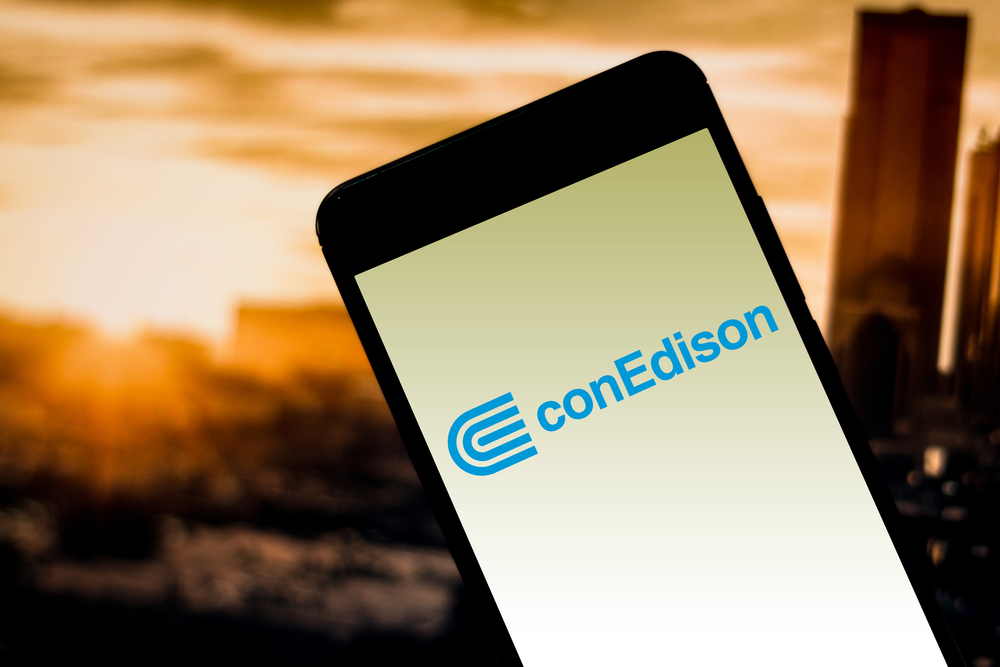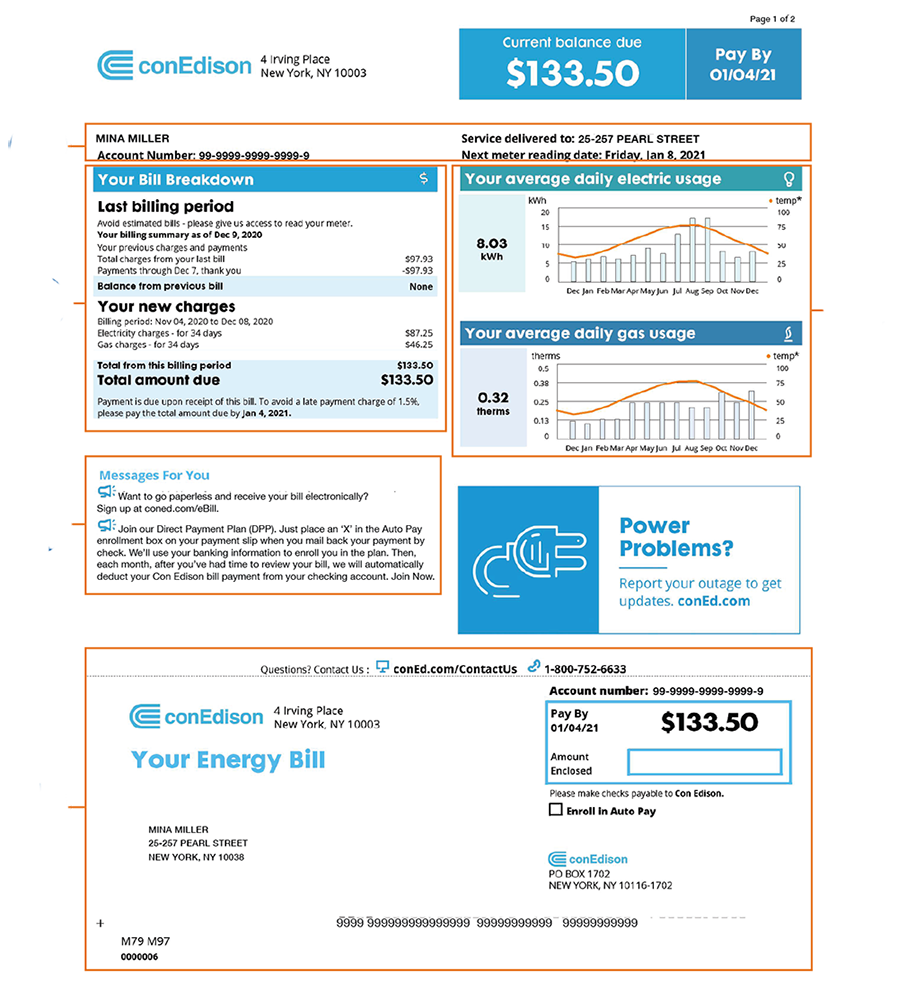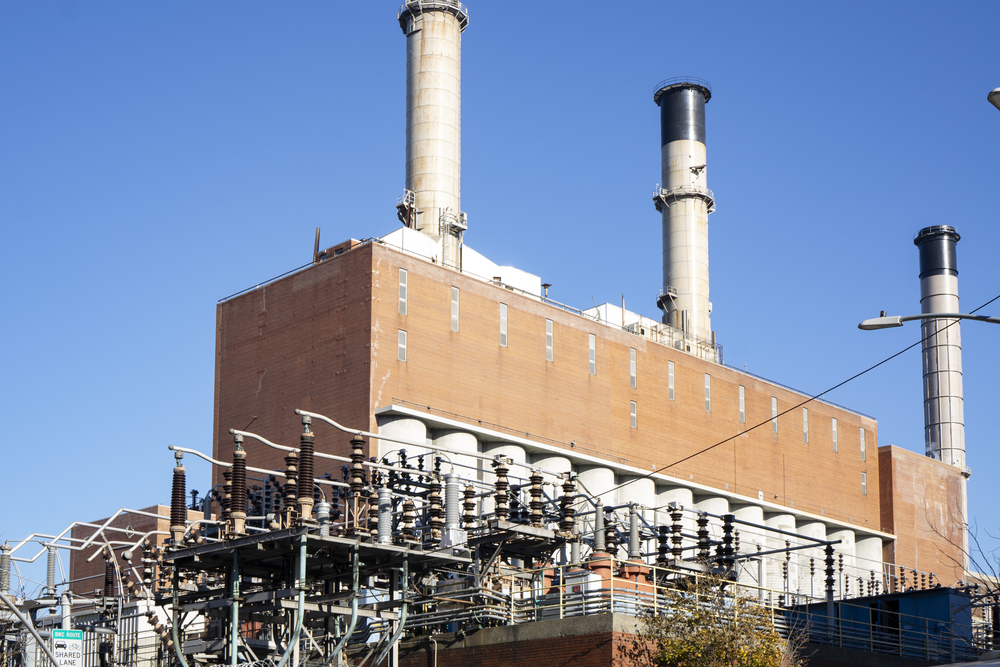Everything You Need to Know About Your Con Edison Energy Bill

Are you dismayed by your high power expenses? Or do you just want to save a few bucks from your electricity bills? Understanding what the charges in your bill mean can motivate you to curb your energy usage. Why? You may ask. Well, it’s like this. Almost all of the fees on your energy bills are per kWh based. So the more electricity you consume, the higher those charges get.
Is Con Edison or ConEd your electricity company? Let us help you determine what those charges on your Con Edison electric bill signify. In this way, you’ll get a clearer idea of where your money goes and how reducing your energy consumption can make a difference.
Con Edison Electric Rates
Being a utility company, Con Edison takes care of the infrastructure that gets electricity to your homes. The company doesn’t generate electric power. Neither does it sell electricity plans. Instead, it builds and maintains the facilities that carry electric supply to consumers.
The energy companies are the ones responsible for producing electricity. These companies operate in Con Edison service areas, offering various energy plans to power consumers. Here are your options if ConEd is your electric utility. The electricity for these plans comes from 100% renewable sources.
| Plan Name and Provider | Plan Length | Electric Rate |
|---|---|---|
| New York Green 12 (Major Energy) | 12 months | 12.79 cents per kWh |
| New York Green 24 (Major Energy) | 24 months | 12.89 cents per kWh |
| New York Green 12 (Verde Energy) | 12 months | 12.89 cents per kWh |
| New York Green 24 (Verde Energy) | 24 months | 12.99 cents per kWh |
Electric Bill Sample

Let’s look at a Con Edison bill and examine its various components. Doing so will help you understand how your energy usage affects your electricity bill. Knowing what you’re paying for can also aid in your decision-making regarding your utility provider.
Con Edison energy bills have the following components.
- Account information
- Billing summary
This portion includes:
- Previous charges
- New charges
- Total amount due
- Electricity charges
This portion includes:
- Supply charges
- Delivery charges
- Message center
- Total electricity charges
This portion also shows a history of your energy usage for the year.
Con Edison Bill Details
Now, let’s go into the details of your Con Edison bill and discuss what those sections indicate.
- Account information: This includes your account number, address, rate type, and meter reading date.
- Billing summary: Under this portion are the previous charges, new charges, and the total amount due. Previous charges are those fees you haven’t settled in your previous bill. The new charges are fees for your electricity and natural gas usage. Meanwhile, the total amount due is the sum of the last and new charges.
- Electricity charges: The supply charges, delivery charges, and message center are in this portion. The supply charges are the cost of electricity that Con Edison purchased on your behalf. The delivery charges go into the expenses of Con Edison in bringing the generated electricity from its source to your home. The message center contains information concerning your energy bills, such as late payments and charges you haven’t settled.
- Total electricity charges: This portion shows the sum of your previous and current charges. It also has a graph of your electricity usage.
Account Number
You can find the account number in the upper portion of your Con Edison electricity bill. It usually contains 15 digits. The account number identifies your account for billing purposes. You’ll need this information to switch to a different power provider.
Electricity Usage
This indicates the amount of electricity you used during the billing period. It is measured in kWh, and what you pay will depend on several factors. These include the prevailing electricity prices in the market, your location, and your energy plan.
Charges
Your Con Edison bill shows several charges. Included in these are the supply and delivery charges. You’ll also see the sections for previous fees and new charges. What do they mean? Let’s discuss each one.
The supply charges refer to the cost of energy Con Edison bought in the energy market to deliver to its customers. This is a pass-on cost, meaning the company transfers the cost to you without making a profit. Electric supply rates get affected by different factors. These include the weather and the law of supply and demand.
The delivery charges are associated with expenses that go into the distribution of electricity. Con Edison uses the revenue to maintain and upgrade the infrastructures of their delivery system. The state regulatory agencies or Public Utility Commissions dictate the amount of these charges. As such, changes in market prices don’t affect the delivery charges.
Previous charges are those fees you failed to pay in your earlier bills. Meanwhile, current charges refer to your consumption for the current billing period.
Message Center
The utility company shares information that may interest you in this section of the bill. Notices concerning late-payments and the charges associated with them go into the message center. Updates on the company’s programs, procedures, and services are also displayed in this portion.
Total Amount Due
This section sums up all the charges appearing on your bill. You have to pay for these on or before the 25th of the following month. If you fail to do so, a percentage of what you owe will be added to the charges.
How To Read Your Electric Bill
Paying utility bills is no fun. Still, it will be a wise move to learn how to read your statement. This will give you an idea about the electric rates and other charges you’re paying for. A Con Ed electricity bill has different components, and here’s what they mean.
In the upper portions are your account information and your billing summary. The new previous charges and new charges are in this section. Next comes the electricity charges. They are more commonly known as delivery charges. They show the fees of the utility suppliers plus the sales tax and other charges.
The total charges indicate the sum of all the fees you need to pay. This portion of the bill shows a graph of your power usage.
Finding Your Con Edison Electric Bill
Many consumers want to know how much they’ll need to pay for their utilities. Doing so lets them ensure they have the money required to settle their obligations. To find your Con Edison bill, log on to your Con Ed account here. If you encounter any problems, call Con Edison customer support at 1-800-752-6633.
Con Edison Electricity Charges
Using electricity comes at a cost. The same goes for having a reliable energy service. Your utility bills you for these, and they fall under the section electricity charges. The fees are divided into two portions.
Supply Charges
These are the charges you pay for the electricity you consume. Your usage is measured in kWh and how much you shell out depends on your consumption. Here is what goes into the computation of the supply charges.
- Market prices: This is the price of electricity in the energy market that Con Ed purchased. The market price of electricity constantly fluctuates, so Con Ed will charge you the average rate covered in the billing period.
- Merchant function charge: This relates to the utility company’s operational costs in getting the electricity. Examples of such expenses are the salaries of personnel who purchase electric power and their office equipment.
- Gross Receipts Tax or GRT and other tax surcharges (state surcharge): The GRT is similar to the sales tax, but the state charges it to Con Ed. The utility company then passes on this tax they paid to their customers.
- Total electricity supply cost per kWh: This shows how much electricity you’ve consumed and the corresponding price of your usage.
Delivery Charges
The electricity needs to get to the end-users or customers from its generation point. Delivering electric power to homes or business establishments incurs some expenses. The utility company bills you for this, showing the charges as delivery charges. These are broken down into the following:
- Basic service charge: This charge is not dependent on your consumption. That is, you pay a fixed amount no matter how many kWh you use. It goes into the cost of maintaining and reading the meter, producing and sending your bill, and processing your payment.
- Delivery charge: The amount you pay for this charge depends on your total kWh consumption. The fee is for the maintenance of the power grid.
- System Benefits Charge or SBC charges (state surcharge): The SBC charges are used to support energy efficiency programs, research and development, education, and low-income discounts in energy for financially challenged individuals.
- Renewable Portfolio Standard or RPS charges (state surcharge): The state of New York has set renewable energy goals, and the RPS charges pay for these.
- The Temporary New York State Surcharge: This charge aims to promote the conservation of energy and other resources.
- GRT & other tax surcharges (state surcharge): This charge is similar to the GRT in the supply charges.
Electric Delivery vs Supply Delivery
You’ll see a breakdown of what went into the electric and supply delivery in your bill. But what do these terms mean? Well, Con Edison electric delivery charges go into the transmission of electric power into your home. The revenue it generates goes into the operation and maintenance of the transmission and distribution system. It also covers other expenses such as taxes, funding for customer service, and the like.
Meanwhile, supply delivery refers to the electricity you consume. You will see in this section the rate you pay for your electric power. You can use the information if you want to switch to a different provider by comparing the rate per kWh of other energy companies. Take note that your supply delivery charges remain the same no matter who your utility provider may be.
How Does Net Energy Metering Affect Con Ed Bill?
Net metering comes into the picture if you use solar panels and draw electric power from the grid. Con Ed gives you credits with net metering if your solar panels generate more power than you need. You can then use those credits to offset the energy you draw from the grid during those times when your panels don’t generate enough for your needs.
Con Edison Users
Con Ed users belong to different categories. Each of these has varying energy usage levels and electricity rates. Most electricity companies offer plans that best suit each type.
Residential Customers
Residential customers account for about one-third of the electricity used in the country. They include single-family homes and multi-family housing facilities. Their power usage usually comes from lighting, water heating, appliances, electronics, and cooling.
Business customers
Business customers refer to consumers in non-residential premises. These include public offices, shops, and cinemas. Heating, ventilation, lighting, and air conditioning comprise the bulk of their energy consumption.
Lowering Your Electric Bill
Whether you use electricity or natural gas, it’s essential to lower your electric bill. That’s if you want to save money on your utilities. That being said, we know that reducing your power consumption can be challenging. Here are some tips to help you achieve your goal.
- Check your recent bill to determine your current usage and the rates you pay.
- Review the different energy plans available in Con Ed’s service area. Pay particular attention to their rates.
- Choose a supplier based on your needs, its prices, and consumer reviews.
- When your contract with your current provider expires, sign in with the one you’ve picked.
Multiple Ways To Pay Your Bills
Con Ed lessens the hassle of paying your bills. Such a move helps you avoid late or missed payments. That’s because you can settle your accounts in so many convenient ways.
Online Payment
You can view and pay your Con Ed energy bill on their website. Log into your account and pay using your credit card or checking account. This option comes at no extra charge.
Phone Billing
Using your phone to pay your bill is another option for you. To make a payment, simply call Con Edison at 1-888-925-5016. You can pay your amount due with your credit card or bank account.
In-Person Billing
Do you want to hand in your payment personally? No worries. In-person billing is open to Con Ed customers. Drop by at any authorized bill payment location and walk-in center in your area to use this method.
Payment by Mail
If you use this method, it may take a while for your payment to reach the company. Still, it’s another option available to you. Settle your amount due via check or money order payable to Con Edison. The company’s mailing address for bill payment is Con Edison, JAF Station P.O. Box 1702, New York, NY 10116-1702.
Auto Billing
Signing up for auto-billing lets you take care of your electricity bill instantly. In this payment method, you’ll need to enroll in AutoPay. After that, the amount due will be automatically deducted from your bank account. That means you’ll never have to worry about missing a payment because you forgot about your bill.
Con Edison Payment Plans
Con Edison aims to make paying your bills quick and easy. That’s why aside from providing several ways to settle your account obligations, it also offers payment plans that can help ease your budgeting challenges.
Level Payment Plan
You pay a variable rate with Con Edison. This means that your bill varies significantly from month to month. If you want to avoid fluctuations in your monthly bills, you can opt for a Level Payment Plan. Under this plan, the company will estimate your annual electricity consumption and divide it into 12 monthly payments.
After 12 months, Con Edison will compare the estimates with your actual consumption. If your monthly payments exceed your consumption, the excess gets credited to the next bill. However, if you consumed more than you paid for, the cost will be added to your succeeding bill.
Payment Assistance
Are you having some trouble paying your electric bill? Con Edison won’t squeeze you for the money you owe the company. Instead, it offers several assistance programs to help those facing financial challenges. These programs include the Safety Net Assistance (SNA) and the Home Energy Assistance Program (HEAP).
About Con Edison

Consolidated Edison Inc. or Con Edison is a New York utility and ranks as one of the world’s largest energy delivery companies. It began operations in 1823 as the New York Gas Light Company. After over a century, it now serves more than 3.4 million customers in New York City and Westchester County.
Mitigating the impact of climate change is one of the company’s advocacies. To push this initiative, Con Edison focuses on producing clean and renewable electricity. Converting homes and businesses from oil to gas is also part of their efforts to save the environment.
Setting Up Your Account
Setting up your account will only take a few minutes. Here’s how you do it.
- Click this link on a safe browser.
- Fill in the necessary information.
- Create a strong and unique password for your online account.
- Review and then verify the information you provided and click “Register.”
Con Edison Customer Support
To make it easy to reach Con Edison’s customer support, the company provided a couple of options.
- Use the Contact Us page. It features an online form for general inquiries.
- Call the company’s emergency number 1-800-752-6633 for emergencies and report power outages.
Contact Information
If you need to contact Con Edison, here’s where you can reach them.
- Telephone number: 1-800-752-6633
- Mailing address
For bill payments: Con Edison, JAF Station P.O. Box 1702, New York, NY 10116-1702
For general correspondence: Con Edison, Cooper Station P.O. Box 138, New York, NY 10276-0138
FAQs
Does Con Edison ask for a social security number?
No, Con Edison won’t usually ask for your social security number. In fact, the company advises its customers not to provide sensitive information to anyone who requests it. Such data include credit card and banking details and, yes, social security numbers.
What is the average Con Edison bill?
The average Con Edison bill depends on your rate type and electricity consumption. Residential customers in New York City who use 300 kWh a month will have an average bill of $78.52. Westchester residential customers who consume 450 kWh will pay $109.64 a month on average. Meanwhile, commercial customers with a 10,800 kWh with a peak demand of 30 kW will have an average bill of $2,042.29.
Why is my Con Edison bill so high?
Con Edison passes on the price of the electricity it purchased from energy companies. Now, the cost of electricity in the market fluctuates constantly. Recent surges in power rates have also driven up your electricity bill.
Can you have two ConEd accounts?
Yes, you can have two accounts using only one set of log-in information. After you’ve logged in, you can use the dropdown menu in the upper right-hand corner of the screen to access the account you want.
Conclusion
Lowering your power usage offers many benefits. Saving money on your energy bills is one of them. Aside from that, you also help the environment. That’s because reduced electricity demand means fewer fossil fuels get burned for energy generation. This also lowers greenhouse gas emissions.
One surefire way to lessen your power expenses is by practicing energy efficiency measures. But there’s another often overlooked way of saving money on your electricity bills. That’s by choosing a utility provider that offers lower rates. Con Edison works with several energy companies, which gives you several options if you want to switch.
Updated on
